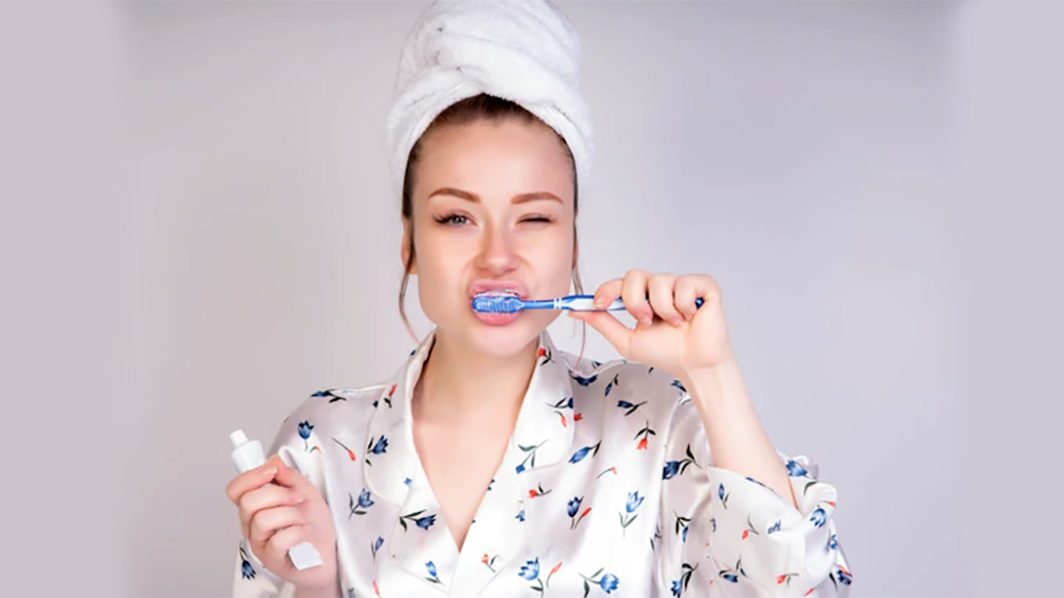
How much thought did you give when selecting your last toothbrush???
-
- Was it one suggested by your dentist?
-
- Did you like the color?
-
- Was it the latest advertised gadget?
Here’s our recommendations for choosing both a toothbrush and paste that will give you a dazzling smile and fresh tasting mouth.
Toothpaste – Toothpaste and a correct brushing action work
together to remove plaque,![]() a harmful film of bacteria that grows on your teeth
a harmful film of bacteria that grows on your teeth
and can cause decay, gum disease, tooth loss and bad breath if not controlled.
Toothpaste that contains fluoride makes the entire tooth structure more
resistant to decay and promotes remineralisation, this aids in repairing early
decay even before the damage can be seen. There are also special ingredients in
the toothpaste that help to clean and polish the teeth, helping to remove not
only plaque but stains over time. Toothpaste also helps to freshen breath and
leaves your mouth and teeth with a clean and smooth feeling.
Whattype of toothpaste should I use?
Paste or gel, with or without
flavorings is very much down to your personal preferences. Most of the brand
name products will do the job, just compare the ingredients and make your
choice and don’t be afraid to change till you find a paste you really like. The
most important ingredient in any toothpaste is Fluoride because it works
effectively to fight plaque and cavities.
How much should I use?
Most toothpaste ads give the impression that you need copious
amounts of paste to work, but I guess they have a vested interest?, this simply
isn’t so. A peanut sized blob is all that should be needed, simply brush your
teeth at a 45 degree angle towards the gum line and brush the front, back and
between your teeth and you will find that the paste will foam enough to cover
all your teeth.
Children up to the age of six should however should only
be given a very small baby pea sized dab of toothpaste on the brush, there are
special strength Fluoride toothpastes that are especially made for children
under six. In all circumstances always read the label and refer to your dental
or medical practitioner if in any doubt.
How long should brush for?
Dentists generally recommend that teeth should be brushed for
between 3 and 4 minutes at least twice a day, that’s in the morning and before
going to bed. You could use an egg timer to measure your brushing time or
perhaps you’d prefer to brush your teeth whilst listening to the radio as most
modern songs are about 3 minutes long.
Your toothbrush…
Looking at the range of brushes on offer is it little
wonder that we are somewhat perplexed when making the right decision? All
brushes comprise the same components, an average brush has approximately 2,500
bristles grouped into tufts. The tufts are folded over a metal staple and
forced into pre cored holes in the head and fixed in place. The handle is
normally made of plastic and rubber for comfort and shaped to fit the hand at
the right angle and with comfort. That’s the basics of your toothbrush so
here’s what to look for…
The best bristles to consider are those with
rounded ends and of medium texture, the head of the brush should be small
enough to reach your back teeth easily, completely and in comfort. The handle
must be long enough to reach all areas of your mouth without difficulty and for
those who have difficulty holding small items there is now a range of wide or
thick handled brushes or electric toothbrushes to consider.
When to replace your brush?
Dentists recommend that your toothbrushes should be replaced in the following circumstances
-
- After every 3 months of use
-
- After a cold or illness
-
- When the bristles lose their shape
Electric toothbrushes
Once a novelty item in the bathroom electric toothbrushes are becoming increasingly
popular, recent studies suggest there are some advantages for people in using
an electric toothbrush, these include improved cleaning, better removal of
staining and plaque and they are particularly good for people who have limited
manual dexterity.
Children often prefer an electric toothbrush due to
the smaller head making easier to reach all areas of the mouth, they also like
the novelty value of the buzzing and with manufacturers making electric
toothbrushes specifically designed for children it is likely that the next
generation will see an electric toothbrush as the norm.




